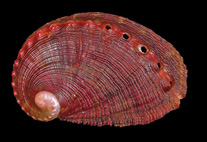Abstract
We report the first records of chewing lice from an isolated population of the solitary tinamou (formerly known as Tinamus solitarius pernambucensis Berla, 1946) in the Pernambuco Centre of Endemism (PCE), Brazil. All louse records previously published from the solitary tinamou came from the populations south of the São Francisco River, formerly known as Tinamus solitarius solitarius (Vieillot, 1819). Five known species of the family Heptapsogasteridae were identified from the northern population of this host: Heptarthrogaster grandis Carriker, 1936; Ornicholax alienus (Giebel, 1874); Pterocotes solitarius Guimarães & Lane, 1937; Rhopaloceras oniscus (Nitzsch [in Giebel], 1866); and Strongylocotes wernecki Guimarães & Lane, 1937. Also, the new species Heptagoniodes guimaraesi is described and illustrated from the northern population of this host, and a key for identification of all the species of Heptagoniodes Carriker, 1936 is included. The discovery of H. guimaraesi is the first Brazilian example of a bird ectoparasite represented by two different species of the same genus living on two distinct populations of the same host species. Records of eight louse species and 31 new localities from the southern population of the solitary tinamou in Brazil are given, and an updated list of all the chewing lice known from both host populations [subspecies] is included.

